Fevered Star is the second book in Rebecca Roanhorse’s brilliantly imagined series Between Earth and Sky. Picking up directly after the conclusion of Black Sun, Fevered Star pushes its central characters in new directions while building on their gods-driven purposes played out in a richly imagined setting that draws together elements of many pre-Columbian American cultures. The story centers around three people: a young man, Serapio, whose destiny is to become the Odo Sedoh, the crow god of fierce powers, Naranpa, a young woman who has taken in the power of the sun god, and Xiala, a tough sea captain who has magic power in her voice that can either calm a storm or let loose a killing violence. These are strong characters, each beset with inner conflicts about reconciling divine or magical powers with their human identities.
The world they inhabit is just as compelling. The Meridian resembles many civilizations of different parts of the Americas brought together around the imaginary Crescent Sea. There is the holy city of Tova, built on cliffsides by the Tovasheh River, each district dominated by a Sky Made clan – golden eagle, carrion crow, water-strider, winged serpent – whose leaders fly on giant winged creatures and whose priests keep the world from falling into chaos. It is “wreathed by clouds and held together by silky woven bridges.” There is the trading city of Cuecola, “the hot breath of the world, heavy with humanity and jungle sweat,” the city of the plains, Hokaia, dominated by its great stepped pyramids (inspired by the real Cahokia that Annalee Newitz describes so well in Four Lost Cities), and the island territory of the sea-faring Teek.
Roanhorse has created a rich background for the Meridian, detailing its rituals, priestly orders, magic traditions, history going back many centuries, writings, complicated geography, as well as its cities that play a big role in shaping the culture and personal outlook of her characters. It’s a world I wanted to spend a lot of time in, but the core of the story, naturally, is the way Meridian shapes the lives and fates of the people who are so vividly brought to life.
In Black Sun, we meet Serapio as a teenager who is being prepared for a fate he will not be able to control. The sign of the crow god is carved into his chest, and his eyes are sewn shut, preparing him for the day when he becomes the body for the Odo Sedoh and can see through the eyes of crows. He struggles with this destiny, which calls on him to seek vengeance against the sun god. Yet he feels sharply the separation from his family, especially his father, as his mother takes him in hand and puts him under the care of priests who prepare him to act as the avatar of a god.
Naranpa is similarly chosen to serve as the vessel of the sun god, setting her on a course to fight the crow god. Yet she does not come from one of the Sky Made clans of Tova but from a more common background. She would be the first Sun Priest from such an upbringing and that gnaws at her self-confidence. What she gradually learns, though, is the glowing energy that can emanate from her body is a sure sign of her destiny. She undergoes many tests to learn how to control her power, including being nearly killed by a priest who tries to take over her role.
Xiala is the tough and rowdy outcast from the Teek who loses herself in drink while trying to find a place as captain of a ship. She is given a chance to prove her ability to help navigate a ship through stormy weather with the power of her song, and it is on that voyage that she meets and falls in love with Serapio, the man. Through Fevered Star, she is focused on reuniting with him in his human form. As a god, Serapio, the Odo Sedoh, can not only obliterate the crow god’s enemies but also turn into a flock of crows to fly with them and see the world as they do.
Black Sun and Fevered Star tell one story (I think a third part must be on the way) and should be read together, as I did. This makes for a very long book, and a reader accustomed to the explosive inventiveness and high energy of Roanhorse’s first duology, The Sixth World (Trail of Lightning and Storm of Locusts) should be prepared for subtler and more inward looking characters. There are surely scenes of exciting violence in both Black Sun and Fevered Star, but there are also complex conspiracies that keep separating the main characters and deflecting them from their inevitable confrontation. Because this is a story with many layers, it is told through multiple points of view, and often it is the supporting characters who hold center stage. They give us new perspectives on the central characters while trying to make them serve the purposes of their own machinations.
There is Lord Balam, ruthless and crafty, forever devising plans to advance his vision to break the world and even realign the heavens. Zataya is a witch who saves and revives Naranpa when she is betrayed by a false sun priest. The wily Iktan, the priest of Knives, appears to help Naranpa but turns out to have multiple agendas of his own. Lord Okoa, a crow son and warrior, tries to help Serapio but is horrified to see how deeply involved with death he is becoming as the Odo Sedoh. Denaochi, Naranpa’s brother, tests her in torturous ordeals yet is ready to die for her as well. It is in a powerful scene where Naranpa heals his wounds that she senses the full power of the god within her. Each of these characters draws Serapio and Naranpa deeper into their fates, while surrounded by complex conspiracies that threaten to undo a peace that has lasted 300 years and bring back an age of chaotic warfare.
I find the world of Between Earth and Sky fascinating and powerful. This series is an imaginative triumph, and Roanhorse is bringing us ever richer and more diverse fantasy worlds.
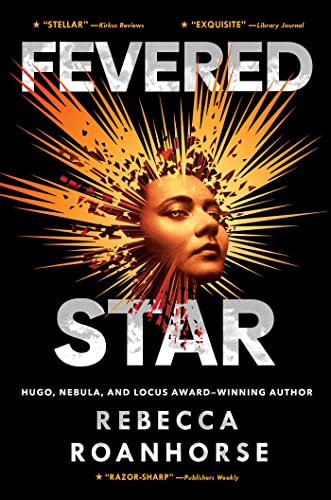
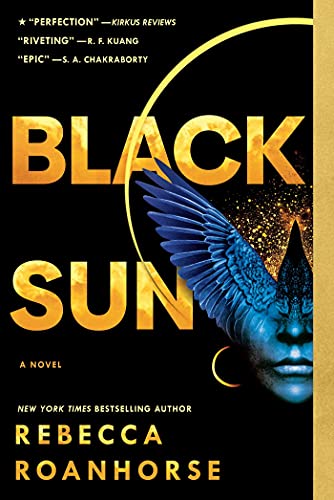
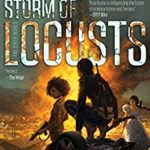
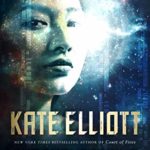
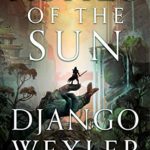

Leave a Reply